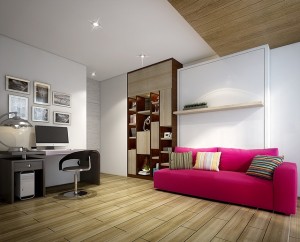 LED downlights, also known as recessed lights, can lights, or pot lights, are one of the most popular lighting solutions for indoor and outdoor lighting applications. These fixtures are designed to be installed into a cavity in the ceiling, shining the light of an LED light bulb in a downwards direction—as the name suggests. When used in groups of four (one in every corner of a room) or more, LED downlights are an elegant, efficient, and bright (literally) way to illuminate your [city] home.
LED downlights, also known as recessed lights, can lights, or pot lights, are one of the most popular lighting solutions for indoor and outdoor lighting applications. These fixtures are designed to be installed into a cavity in the ceiling, shining the light of an LED light bulb in a downwards direction—as the name suggests. When used in groups of four (one in every corner of a room) or more, LED downlights are an elegant, efficient, and bright (literally) way to illuminate your [city] home.
When shopping for LED downlights, consider the following factors.
1. Downlight Trim
The trim refers to the visible portion of the light; it’s the insert you see when you look up into the fixture. Different downlights come with different trims, and your choice should largely depend on the size and décor of your room, desired lighting quality, and personal preference. Examples of trims include:
- Baffle trims – Reduces glare by trapping light, making it ideal for soft lounge lighting
- Eyeball trims – Perfect for spot lighting
- Reflector trims – Reflects light from the LED to maximize illumination in a room
- Lensed trims – Features a protective lens that shield the LED from moisture, making it ideal for bathrooms and outdoor lighting
2. Color Temperature
The great thing about LEDs is that they come in all kinds of colors, the most common ranging from cool white to warm white. Warm white light has a yellowish glow, and is ideal for creating an intimate and relaxed atmosphere. In contrast, cool white light has a bluish white glow (like daylight), and is ideal for task-oriented spaces in the household, like kitchens, garages, and home offices among others. As such, it’s important to think about the purpose of a room in order to choose the appropriate LED downlights.
3. Beam Spread or Angle
Beam angle refers to the spread (wideness or narrowness) of light generated by the LED downlight. As you may have figured out, downlights with wider beam spreads are ideal for general purpose lighting; just remember that the wide the beam angle, the less concentrated the light becomes, making it softer.
In contrast, LED downlights with narrower beam spreads are better suited for accent lighting, which can be installed in bathrooms and kitchens. These lights are also ideal as task lights where focused light is needed.
When choosing between beam spreads, think of how high, or low, your ceilings are. Rooms with low ceilings are better off with wider angled LEDs, which will ensure an even spread of light. Conversely, high-ceilinged rooms need focused light, so narrow angled LEDs are the way to go.
4. Lumens
And finally, look at each LED downlight’s lumens rating. The more lumens an LED light bulb produces, the brighter it will be. To calculate how many lumens you need for a room, refer to this guide on how to determine lumens per square foot.
With these pointers, you should be able to purchase the right LED downlights for your home. When in doubt, consult the services of an electrician or lighting designer.

![LEDs Powered These 5 Major Projects Around the World in 2017 [city]](https://eepros.com/wp-content/uploads/2018/02/railway-led.jpg)
![Everything You Wanted to Know about LED Lighting [city]](https://8blocks.s3.amazonaws.com/eepros/blog-images/2013/04/LED-Beauty-Shot-300x225.jpg)
![5 Commercial Lighting Tips That’ll Help Your Business Save Money [city]](https://eepros.com/wp-content/uploads/2019/02/money-2180338_640-300x200.jpg)
![7 Ways to Increase Commercial Energy Savings in 2020 in [city] [city]](https://eepros.com/wp-content/uploads/2020/03/escalator-283448_640-300x197.jpg)